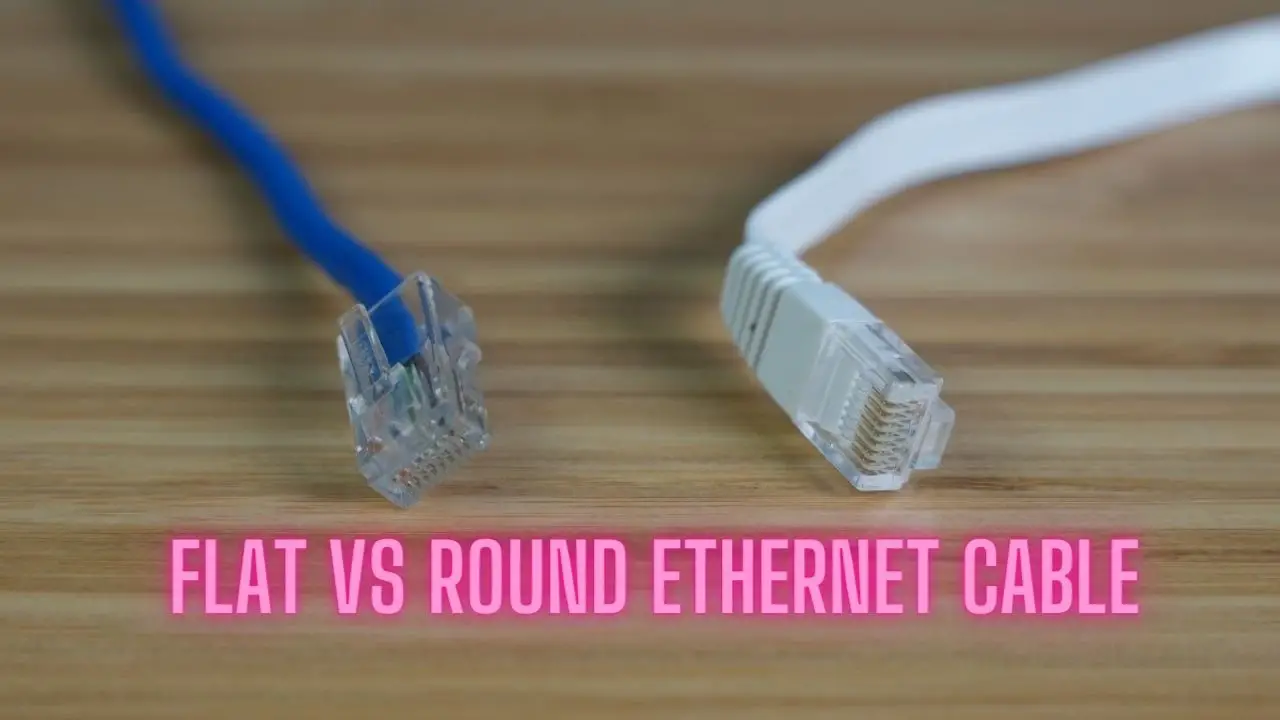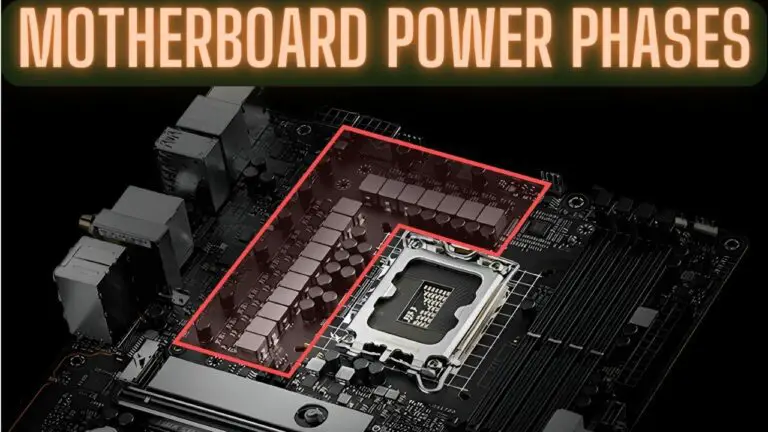Flat VS Round Ethernet Cable: Major Differences
Introduction
Ethernet cables are essential components for networking, facilitating the transmission of data between devices within a local area network (LAN) or connecting devices to the internet. When it comes to Ethernet cables, there are various types available, including flat and round cables. Both types serve the same purpose of transmitting data, but they differ in their physical characteristics and applications.
In this discussion, we will explore the differences between flat and round Ethernet cables, highlighting their unique features, advantages, disadvantages, and practical considerations. By understanding the distinctions between these cable types, you can make informed decisions when selecting the most suitable option for your networking needs.
Overview of Ethernet Cables
Ethernet cables are the physical medium used to connect devices to a local area network (LAN), wide area network (WAN), or the internet. They enable the transfer of data between computers, routers, switches, and other networking devices by transmitting electrical signals. Ethernet cables come in various types, each designed for specific applications and networking requirements. Some common types of Ethernet cables include:
- Cat5e (Category 5e): Cat5e cables are one of the most widely used Ethernet cables. They support data transmission speeds of up to 1 gigabit per second (Gbps) and are suitable for most residential and small business network setups.
- Cat6 (Category 6): Cat6 cables offer improved performance and support higher data transfer rates compared to Cat5e cables. They are capable of transmitting data at speeds of up to 10 Gbps over short distances and are commonly used in larger network installations.
- Cat6a (Category 6a): Cat6a cables are an enhanced version of Cat6 cables, featuring even higher data transmission speeds and better performance. They can support data rates of up to 10 Gbps over longer distances and are often used in high-performance network environments.
- Cat7 (Category 7): Cat7 cables are designed to provide superior performance and reliability, with support for data transmission speeds of up to 10 Gbps or more over long distances. They feature shielding to minimize interference and are suitable for demanding applications such as data centers and enterprise networks.
- Flat Ethernet Cables: Flat Ethernet cables are characterized by their thin and flexible design, making them ideal for installations where space is limited or where cables need to be run under carpets or along baseboards.
- Round Ethernet Cables: Round Ethernet cables have a traditional cylindrical shape and are more commonly used in standard networking installations. They come in various categories (e.g., Cat5e, Cat6, Cat6a) and offer robust performance and durability.
Ethernet cables are available in different lengths and colors to suit various installation requirements and aesthetic preferences. When selecting an Ethernet cable, it’s essential to consider factors such as the desired data transmission speed, the distance between devices, and environmental conditions to ensure optimal performance and reliability.
Characteristics of Flat Ethernet Cables
Flat Ethernet cables, as the name suggests, have a flat and thin profile compared to traditional round Ethernet cables. Here are some key characteristics of flat Ethernet cables:
- Physical Design: Flat Ethernet cables feature a flat, ribbon-like design, with the internal wires arranged side by side rather than twisted together like in round cables. This design results in a cable that is much thinner and more flexible than traditional round Ethernet cables.
- Flexibility: Due to their flat design, flat Ethernet cables are highly flexible and can be easily routed around corners, under carpets, or along baseboards without causing bulges or obstructions. This flexibility makes them ideal for installations in tight spaces or areas where traditional round cables may be difficult to route.
- Space-Saving: The slim profile of flat Ethernet cables helps save space, making them particularly suitable for installations where space is limited or where a clean and unobtrusive appearance is desired. They are often used in home theater setups, wall-mounted TVs, and other applications where aesthetics are important.
- Easy Installation: Flat Ethernet cables are easy to install and conceal due to their thin profile. They can be laid flat against surfaces or tucked away neatly without the need for bulky cable management solutions. This ease of installation simplifies the setup process and reduces clutter in residential or commercial environments.
- Compatibility: Flat Ethernet cables are compatible with standard RJ45 connectors, allowing them to be used with a wide range of networking devices such as routers, switches, computers, and gaming consoles. They support Ethernet standards such as Category 5e (Cat5e) or Category 6 (Cat6), providing reliable data transmission for various networking applications.
- Performance: Despite their slim design, flat Ethernet cables offer comparable performance to traditional round cables. They provide high-speed data transmission and reliable connectivity, making them suitable for both home and office networking environments.
- Cost-Effective: Flat Ethernet cables are often more affordable than their round counterparts, making them a cost-effective solution for networking projects where budget constraints are a consideration.
Overall, flat Ethernet cables offer a sleek, space-saving, and flexible alternative to traditional round cables, making them well-suited for installations in residential, commercial, and industrial settings. Their thin profile, easy installation, and compatibility with standard networking equipment make them a popular choice for modern networking applications.
Characteristics of Round Ethernet Cables
Round Ethernet cables are the traditional form of Ethernet cables and are widely used in networking applications. Here are some key characteristics of round Ethernet cables:
- Physical Design: Round Ethernet cables have a cylindrical shape, with the internal wires twisted together into pairs and encased in a protective outer jacket. This design provides durability and protection against external factors such as abrasion, bending, and interference.
- Durability: Round Ethernet cables are designed to withstand rugged conditions and heavy usage. The twisted-pair construction and robust outer jacket provide excellent protection against physical damage, making them suitable for both indoor and outdoor installations.
- Standardization: Round Ethernet cables adhere to standardized specifications and performance ratings, ensuring compatibility with a wide range of networking devices and infrastructure. They are available in various categories such as Cat5e, Cat6, and Cat6a, each offering different levels of performance and bandwidth capacity.
- Performance: Round Ethernet cables offer reliable performance and high-speed data transmission, meeting the requirements of modern networking applications. They provide low levels of crosstalk, interference, and signal degradation, resulting in stable and consistent network connectivity.
- Longer Transmission Distances: Round Ethernet cables can support longer transmission distances compared to flat cables, especially when using higher category cables such as Cat6 or Cat6a. This makes them suitable for installations where longer cable runs are required, such as in large office buildings or data centers.
- Structured Cabling Systems: Round Ethernet cables are commonly used as part of structured cabling systems, where they are installed in structured pathways and connected to patch panels, switches, and other networking equipment. Their standardized design simplifies cable management and facilitates easy identification and troubleshooting.
- Shielding Options: Round Ethernet cables are available with different types of shielding, including unshielded (UTP), shielded (STP), and foiled twisted pair (FTP). Shielded cables provide additional protection against electromagnetic interference (EMI) and radio frequency interference (RFI), making them suitable for use in noisy environments or areas with high levels of electrical interference.
- Versatility: Round Ethernet cables are versatile and can be used in a wide range of applications, including residential, commercial, and industrial networking environments. They are compatible with various networking devices such as routers, switches, computers, IP cameras, and VoIP phones.
Overall, round Ethernet cables offer durability, performance, and compatibility, making them a reliable choice for networking installations where reliability and longevity are essential. Their standardized design, long transmission distances, and shielding options make them suitable for diverse networking applications across different industries.
Differences Between Flat and Round Ethernet Cables
Flat and round Ethernet cables differ in several key aspects, including their physical design, installation flexibility, performance characteristics, and suitability for different applications. Here are the main differences between flat and round Ethernet cables:
- Physical Design:
- Flat Ethernet cables have a thin and flat profile, resembling a ribbon, while round Ethernet cables have a cylindrical shape with twisted pairs of wires encased in a protective outer jacket.
- Flexibility:
- Flat Ethernet cables are highly flexible and can be easily bent or routed around tight corners, making them ideal for installations in confined spaces or areas where flexibility is essential. Round Ethernet cables are less flexible due to their thicker and stiffer construction.
- Installation:
- Flat Ethernet cables are easier to install and conceal than round cables due to their slim profile and flexibility. They can be laid flat against surfaces, routed under carpets, or tucked away neatly without causing bulges or obstructions. Round Ethernet cables may require more effort to install and may not be as discreet in certain installations.
- Durability:
- Round Ethernet cables typically offer better durability and protection against physical damage compared to flat cables. The twisted-pair construction and robust outer jacket of round cables provide enhanced resistance to abrasion, bending, and interference.
- Performance:
- Both flat and round Ethernet cables can support high-speed data transmission and provide reliable connectivity. However, round cables may offer slightly better performance in terms of signal integrity and interference resistance, especially over longer cable runs.
- Applications:
- Flat Ethernet cables are commonly used in residential settings, home theater installations, and other applications where aesthetics and space-saving are important considerations. Round Ethernet cables are more commonly used in commercial and industrial environments, structured cabling systems, and outdoor installations where durability and performance are paramount.
- Compatibility:
- Both flat and round Ethernet cables are compatible with standard RJ45 connectors and networking devices such as routers, switches, computers, and IP cameras. They adhere to Ethernet standards such as Cat5e, Cat6, or Cat6a, providing reliable data transmission for various networking applications.
Overall, the choice between flat and round Ethernet cables depends on factors such as installation requirements, space constraints, durability needs, and performance considerations. Evaluating these factors will help determine the most suitable cable type for specific networking applications.
Advantages of Flat Ethernet Cables
Flat Ethernet cables offer several advantages over traditional round cables, making them a popular choice for certain networking applications. Here are some of the key advantages of flat Ethernet cables:
- Space-Saving Design: Flat Ethernet cables have a thin and flat profile, which takes up less space compared to round cables. This makes them ideal for installations where space is limited, such as behind furniture, under carpets, or along baseboards.
- Easy Installation: The slim and flexible design of flat Ethernet cables makes them easy to install and conceal. They can be routed discreetly along walls, floors, or ceilings without causing bulges or obstructions. Additionally, their flexibility allows for easier handling and manipulation during installation.
- Aesthetic Appeal: Flat Ethernet cables are aesthetically pleasing and blend seamlessly with modern interiors. Their sleek and low-profile design helps maintain a neat and tidy appearance in residential or office environments, without detracting from the overall decor.
- Reduced Cable Clutter: Flat Ethernet cables help reduce cable clutter by lying flat against surfaces and minimizing the need for bulky cable management solutions. This can improve the overall organization and cleanliness of networking setups, especially in areas with multiple devices and cables.
- Versatility: Flat Ethernet cables are versatile and can be used in a variety of applications, including home networking, gaming consoles, smart TVs, and home theater systems. They are compatible with standard RJ45 connectors and networking equipment, offering reliable data transmission for various devices.
- Convenient Storage: The flat and compact design of flat Ethernet cables makes them easy to store and transport. They can be rolled up or folded neatly for storage, making them ideal for travel or temporary installations.
- Cost-Effective: Flat Ethernet cables are often more affordable than round cables, making them a cost-effective solution for networking projects where budget constraints are a consideration. Despite their lower cost, flat cables offer reliable performance and durability.
Overall, flat Ethernet cables offer a practical and stylish solution for networking installations where space-saving, easy installation, and aesthetic appeal are important considerations. Their slim profile, flexibility, and versatility make them a popular choice for modern networking applications in residential and commercial settings.
Advantages of Round Ethernet Cables
Round Ethernet cables have several advantages that make them a preferred choice for certain networking applications. Here are some of the key advantages of round Ethernet cables:
- Durability: Round Ethernet cables are designed to withstand rugged conditions and heavy usage. The twisted-pair construction and robust outer jacket provide excellent protection against physical damage, such as abrasion, bending, and crushing. This durability ensures reliable performance and long-term reliability in demanding environments.
- Signal Integrity: Round Ethernet cables offer excellent signal integrity and reliability, thanks to their twisted-pair design. The twisted pairs help minimize electromagnetic interference (EMI) and crosstalk, ensuring stable and consistent data transmission. This makes round cables suitable for high-speed networking applications requiring reliable connectivity.
- Long Transmission Distances: Round Ethernet cables can support longer transmission distances compared to flat cables, especially when using higher category cables such as Cat6 or Cat6a. This makes them suitable for installations where longer cable runs are required, such as in large office buildings, data centers, or industrial environments.
- Structured Cabling Systems: Round Ethernet cables are commonly used as part of structured cabling systems, where they are installed in structured pathways and connected to patch panels, switches, and other networking equipment. Their standardized design simplifies cable management and facilitates easy identification and troubleshooting.
- Shielding Options: Round Ethernet cables are available with different types of shielding, including unshielded (UTP), shielded (STP), and foiled twisted pair (FTP). Shielded cables provide additional protection against electromagnetic interference (EMI) and radio frequency interference (RFI), making them suitable for use in noisy environments or areas with high levels of electrical interference.
- Compatibility: Round Ethernet cables are compatible with standard RJ45 connectors and networking equipment, ensuring seamless integration with existing infrastructure. They adhere to Ethernet standards such as Cat5e, Cat6, or Cat6a, providing reliable data transmission for various networking applications.
- Versatility: Round Ethernet cables are versatile and can be used in a wide range of applications, including residential, commercial, and industrial networking environments. They are commonly used in structured cabling systems, outdoor installations, and industrial automation applications where durability and performance are essential.
Overall, round Ethernet cables offer durability, performance, and compatibility, making them a reliable choice for networking installations where reliability and longevity are essential. Their robust construction, signal integrity, and shielding options make them suitable for diverse networking applications across different industries.
Disadvantages of Flat Ethernet Cables
While flat Ethernet cables offer several advantages, they also have some disadvantages compared to round Ethernet cables. Here are some of the main disadvantages of flat Ethernet cables:
- Limited Durability: Flat Ethernet cables may be less durable than round cables, especially in environments where they are subjected to physical stress or bending. The flat design and thin construction make them more susceptible to damage from bending, kinking, or crushing, potentially leading to signal degradation or cable failure over time.
- Reduced Signal Integrity: Due to their flat design and lack of twisting, flat Ethernet cables may be more prone to electromagnetic interference (EMI) and crosstalk compared to round cables. This can result in degraded signal integrity and reduced network performance, particularly in environments with high levels of electrical noise or interference.
- Shorter Transmission Distances: Flat Ethernet cables may have shorter maximum transmission distances compared to round cables, especially when using higher category cables such as Cat6 or Cat6a. The flat design and lack of twisting may result in increased signal attenuation over longer cable runs, limiting their suitability for installations requiring extended distances.
- Limited Shielding Options: Flat Ethernet cables typically have limited options for shielding compared to round cables. While some flat cables may feature internal shielding or foil insulation, they may not provide the same level of protection against electromagnetic interference (EMI) and radio frequency interference (RFI) as shielded round cables. This can affect their performance in environments with high levels of electrical noise or interference.
- Compatibility Issues: Flat Ethernet cables may not be compatible with all networking devices or installations, particularly those requiring adherence to specific industry standards or regulations. Their unique design and construction may pose challenges in certain applications, such as structured cabling systems or outdoor installations, where round cables are more commonly used.
- Limited Availability: Flat Ethernet cables may be less readily available or offered in fewer options compared to round cables. This can limit the selection of cable types, categories, lengths, and colors available for specific networking requirements, potentially restricting the flexibility and customization of installations.
Overall, while flat Ethernet cables offer advantages in terms of space-saving design, flexibility, and aesthetics, they may have limitations in terms of durability, signal integrity, and compatibility compared to round cables. It’s essential to carefully consider these factors when choosing the most suitable cable type for a particular networking application.
Disadvantages of Flat Ethernet Cables
While flat Ethernet cables offer several advantages, they also have some disadvantages compared to round Ethernet cables. Here are some of the main disadvantages of flat Ethernet cables:
- Limited Durability: Flat Ethernet cables may be less durable than round cables, especially in environments where they are subjected to physical stress or bending. The flat design and thin construction make them more susceptible to damage from bending, kinking, or crushing, potentially leading to signal degradation or cable failure over time.
- Reduced Signal Integrity: Due to their flat design and lack of twisting, flat Ethernet cables may be more prone to electromagnetic interference (EMI) and crosstalk compared to round cables. This can result in degraded signal integrity and reduced network performance, particularly in environments with high levels of electrical noise or interference.
- Shorter Transmission Distances: Flat Ethernet cables may have shorter maximum transmission distances compared to round cables, especially when using higher category cables such as Cat6 or Cat6a. The flat design and lack of twisting may result in increased signal attenuation over longer cable runs, limiting their suitability for installations requiring extended distances.
- Limited Shielding Options: Flat Ethernet cables typically have limited options for shielding compared to round cables. While some flat cables may feature internal shielding or foil insulation, they may not provide the same level of protection against electromagnetic interference (EMI) and radio frequency interference (RFI) as shielded round cables. This can affect their performance in environments with high levels of electrical noise or interference.
- Compatibility Issues: Flat Ethernet cables may not be compatible with all networking devices or installations, particularly those requiring adherence to specific industry standards or regulations. Their unique design and construction may pose challenges in certain applications, such as structured cabling systems or outdoor installations, where round cables are more commonly used.
- Limited Availability: Flat Ethernet cables may be less readily available or offered in fewer options compared to round cables. This can limit the selection of cable types, categories, lengths, and colors available for specific networking requirements, potentially restricting the flexibility and customization of installations.
Overall, while flat Ethernet cables offer advantages in terms of space-saving design, flexibility, and aesthetics, they may have limitations in terms of durability, signal integrity, and compatibility compared to round cables. It’s essential to carefully consider these factors when choosing the most suitable cable type for a particular networking application.
Disadvantages of Round Ethernet Cables
Round Ethernet cables, while widely used and versatile, also come with some disadvantages compared to flat Ethernet cables. Here are some of the main disadvantages of round Ethernet cables:
- Bulkiness: Round Ethernet cables tend to be bulkier and less flexible compared to flat cables. Their cylindrical shape and thicker construction make them more challenging to bend and route in tight spaces, which can be a drawback in installations where space is limited or cable management is a concern.
- Difficulty Concealing: Round Ethernet cables are less discreet and more challenging to conceal compared to flat cables. Their bulkier profile and lack of flexibility may make them more conspicuous when routed along walls, floors, or ceilings, potentially detracting from the overall aesthetics of the installation.
- Tendency to Coil: Round Ethernet cables have a natural tendency to coil or retain their shape, especially after being packaged or stored. This can make them more prone to tangling and kinking during installation or handling, requiring extra care to ensure proper cable management and prevent performance issues.
- Higher Cost: Round Ethernet cables may be more expensive than flat cables, particularly when opting for higher category cables or shielded versions. The additional materials and manufacturing processes required for round cables can contribute to higher costs, which may be a consideration for budget-conscious installations.
- Limited Flexibility: Round Ethernet cables are generally less flexible than flat cables, which can pose challenges in installations requiring tight bends or intricate routing paths. Their stiffness may make them less suitable for applications where flexibility and maneuverability are essential, such as in confined spaces or complex network layouts.
- Potential Signal Interference: Despite their shielding options, round Ethernet cables may still be susceptible to electromagnetic interference (EMI) and radio frequency interference (RFI), particularly in environments with high levels of electrical noise. Proper grounding and shielding techniques are necessary to mitigate the risk of signal degradation and ensure reliable data transmission.
- Difficulty in Termination: Termination of round Ethernet cables, particularly with shielded versions, may require specialized tools and techniques compared to flat cables. The process of terminating round cables with RJ45 connectors can be more labor-intensive and time-consuming, potentially adding complexity to installations.
Despite these disadvantages, round Ethernet cables remain a popular choice for many networking applications due to their durability, performance, and compatibility with standard networking equipment. It’s essential to weigh these drawbacks against the specific requirements of each installation to determine the most suitable cable type.
Choosing Between Flat and Round Ethernet Cables
Choosing between flat and round Ethernet cables depends on several factors, including the specific requirements of your networking installation, budget considerations, space limitations, and aesthetic preferences. Here are some key considerations to help you make an informed decision:
- Space Constraints: If you have limited space for cable routing or need to conceal cables along walls, floors, or ceilings, flat Ethernet cables may be the better option. Their slim profile and flexibility allow for easy installation in tight spaces without causing bulges or obstructions.
- Flexibility: Flat Ethernet cables are more flexible than round cables, making them easier to bend and route around corners or obstacles. If your installation requires intricate cable routing or tight bends, flat cables may offer greater flexibility and maneuverability.
- Durability Requirements: Consider the durability requirements of your installation environment. Round Ethernet cables generally offer better protection against physical damage, abrasion, and interference compared to flat cables. If your installation involves harsh conditions or heavy usage, round cables may provide greater durability and longevity.
- Performance: Both flat and round Ethernet cables can support high-speed data transmission and provide reliable connectivity. However, round cables may offer slightly better performance in terms of signal integrity and interference resistance, especially over longer cable runs. Consider the performance requirements of your networking setup and choose the cable type that best meets your needs.
- Cost: Compare the cost of flat and round Ethernet cables, taking into account factors such as cable length, category, and shielding options. While flat cables may be more affordable in some cases, round cables may offer better durability and performance for a slightly higher cost. Consider your budget constraints and choose the cable type that offers the best value for your investment.
- Compatibility: Ensure that the chosen Ethernet cable type is compatible with your networking equipment, such as routers, switches, computers, and IP cameras. Both flat and round cables are compatible with standard RJ45 connectors and networking devices, but round cables may be more commonly used in structured cabling systems and industrial environments.
- Aesthetic Considerations: Consider the aesthetic impact of the Ethernet cables on your installation environment. Flat Ethernet cables are often preferred for residential and office settings due to their sleek and low-profile design, while round cables may be more suitable for commercial and industrial applications where durability and performance are paramount.
Ultimately, the choice between flat and round Ethernet cables depends on your specific needs and preferences. Assess the requirements of your networking installation carefully and select the cable type that offers the best combination of flexibility, durability, performance, and cost-effectiveness for your application.
Practical Considerations
When choosing between flat and round Ethernet cables, it’s essential to consider practical factors that can impact the installation, performance, and maintenance of your network. Here are some practical considerations to keep in mind:
- Installation Environment: Assess the installation environment to determine whether flat or round Ethernet cables are more suitable. Flat cables are ideal for installations where space is limited or where cables need to be concealed along walls, floors, or ceilings. Round cables may be better suited for industrial environments or outdoor installations where durability and protection against physical damage are critical.
- Cable Length and Routing: Consider the length of cable runs and the routing path when selecting Ethernet cables. Flat cables are more flexible and easier to bend, making them suitable for installations requiring tight bends or intricate routing paths. Round cables may be necessary for longer cable runs or installations where cables need to be routed through conduit or cable trays.
- Signal Integrity: Evaluate the signal integrity requirements of your network to ensure reliable data transmission. Round Ethernet cables typically offer better signal integrity and resistance to electromagnetic interference (EMI) compared to flat cables, making them suitable for high-performance networking applications or environments with electrical noise.
- Termination and Connectors: Consider the ease of termination and compatibility with connectors when choosing Ethernet cables. Round cables are more commonly used with standard RJ45 connectors and are easier to terminate compared to flat cables, which may require specialized connectors or termination techniques.
- Aesthetic Preferences: Take into account aesthetic preferences and the visual impact of Ethernet cables on the installation environment. Flat cables offer a sleek and low-profile design that may be more aesthetically pleasing in residential or office settings. Round cables may be preferred for industrial or commercial applications where functionality and durability are prioritized over aesthetics.
- Maintenance and Accessibility: Consider the ease of maintenance and accessibility when selecting Ethernet cables. Flat cables are easier to install and conceal but may be more challenging to access for troubleshooting or maintenance compared to round cables, which have a more traditional design and are easier to work with in some situations.
- Budget Constraints: Factor in budget constraints when choosing Ethernet cables for your network. While flat cables may be more affordable in some cases, round cables may offer better performance and durability for slightly higher cost. Evaluate the overall value and longevity of the cables to make an informed decision based on your budget.
By considering these practical factors, you can choose the most suitable Ethernet cables for your networking installation, ensuring reliable performance, durability, and ease of maintenance.
Flat VS Round Ethernet Cable FAQs
- What are the main differences between flat and round Ethernet cables?
- Flat Ethernet cables have a thin, flat design that makes them ideal for tight spaces and concealed routing, while round cables have a traditional cylindrical shape and offer better durability and signal integrity.
- Which type of Ethernet cable is easier to install?
- Flat Ethernet cables are generally easier to install due to their flexibility and ability to bend around corners or obstacles, making them suitable for installations where space is limited or where cables need to be concealed.
- Are round Ethernet cables more durable than flat ones?
- Yes, round Ethernet cables typically offer better durability and protection against physical damage, abrasion, and interference compared to flat cables, making them suitable for industrial environments or outdoor installations.
- Which type of Ethernet cable is better for high-performance networking applications?
- Round Ethernet cables generally offer better signal integrity and resistance to electromagnetic interference (EMI) compared to flat cables, making them more suitable for high-performance networking applications requiring reliable data transmission.
- Can flat and round Ethernet cables be terminated with the same connectors?
- While both types of cables use standard RJ45 connectors, flat cables may require specialized connectors or termination techniques due to their thin design, whereas round cables are more commonly used with standard connectors.
- Which type of Ethernet cable is more aesthetically pleasing?
- Aesthetic preferences may vary, but flat Ethernet cables are often preferred for residential or office settings due to their sleek and low-profile design, while round cables may be more suitable for industrial or commercial applications.
- Are flat or round Ethernet cables more cost-effective?
- The cost-effectiveness of flat vs. round Ethernet cables depends on factors such as cable length, category, shielding options, and brand. Flat cables may be more affordable in some cases, but round cables may offer better performance and durability for slightly higher cost.
- Can flat Ethernet cables support long-distance cable runs?
- Flat Ethernet cables may have limitations in terms of signal attenuation over longer cable runs compared to round cables, especially when using higher category cables such as Cat6 or Cat6a. Round cables are generally more suitable for longer distances.
Conclusion
In conclusion, when deciding between flat and round Ethernet cables, it’s essential to weigh various factors to determine which option best suits your specific needs and preferences. Flat cables offer advantages such as flexibility, space-saving design, and ease of installation in tight spaces or concealed routing applications. On the other hand, round cables provide enhanced durability, signal integrity, and compatibility with standard connectors, making them suitable for industrial environments or long-distance cable runs.
Ultimately, the choice between flat and round Ethernet cables depends on practical considerations such as the installation environment, cable length and routing requirements, signal integrity concerns, termination and connector compatibility, aesthetic preferences, maintenance accessibility, and budget constraints. By carefully evaluating these factors, you can select the most appropriate Ethernet cable type to ensure reliable data transmission, optimal performance, and long-term durability for your networking infrastructure. Whether you opt for flat or round cables, prioritizing functionality, reliability, and ease of maintenance will help you build a robust and efficient network tailored to your specific needs.







